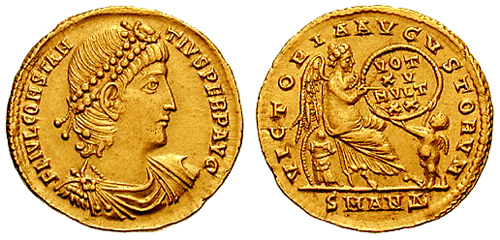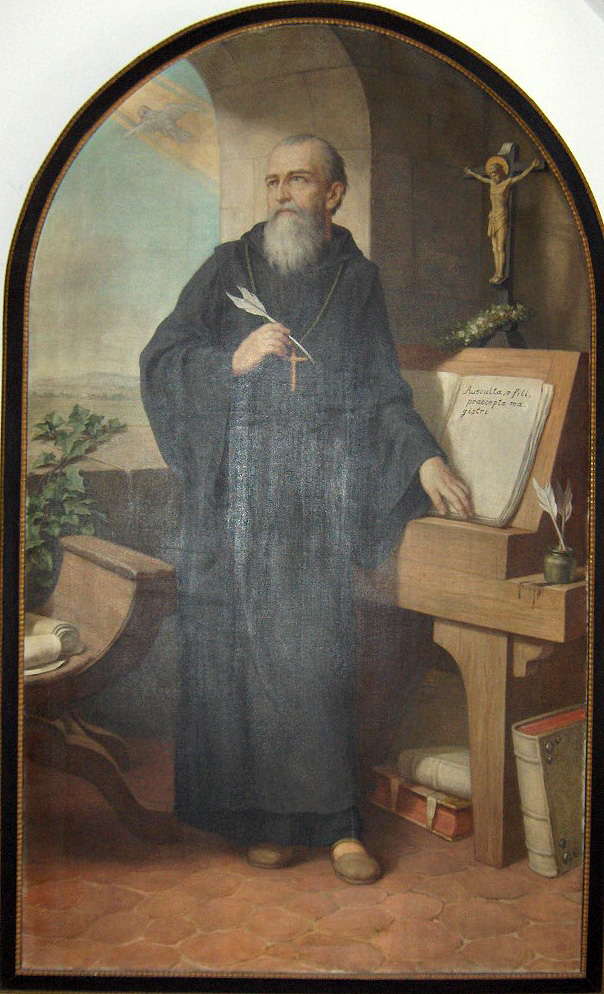|
Lectio Sacra
In Christianity, Lectio Sacra is a Latin term meaning ''sacred reading'' which refer to the reading of Scripture. Church Fathers such as St. Jerome, St. Ambrose, St. Augustine, and St. Hilary of Poitiers had used the term to refer to the reading of Scripture. It was also used along with the term Lectio Divina which included a more meditative aspect and was used by St. Benedict in his Rule. By the time of the Protestant Reformation the term Lectio Sacra was used to refer to the public reading and lectures on the scriptures - often directed against the "heretics." These Lectio Sacra lectures were often delivered in Latin in the churches of larger towns, at times twice a week. ''The Reformation: critical concepts in historical studies'' by Andrew Pettegree 2004 page 343 See also * Lectio continua * Lectio divina In Western Christianity, ''Lectio Divina'' (Latin for "Divine Reading") is a traditional monastic practice of scriptural reading, meditation and prayer intended to p ... [...More Info...] [...Related Items...] OR: [Wikipedia] [Google] [Baidu] |
Christianity
Christianity is an Abrahamic monotheistic religion based on the life and teachings of Jesus of Nazareth Jesus, likely from he, יֵשׁוּעַ, translit=Yēšūaʿ, label=Hebrew/Aramaic ( AD 30 or 33), also referred to as Jesus Christ or Jesus of Nazareth (among other names and titles), was a first-century Jewish preacher and religious .... It is the Major religious groups, world's largest and most widespread religion with roughly 2.38 billion followers representing one-third of the global population. Its adherents, known as Christians, are estimated to make up a majority of the population in Christianity by country, 157 countries and territories, and believe that Jesus in Christianity, Jesus is the Son of God (Christianity), Son of God, whose coming as the Messiah#Christianity, messiah was Old Testament messianic prophecies quoted in the New Testament, prophesied in the Hebrew Bible (called the Old Testament in Christianity) and chronicled in the New Testamen ... [...More Info...] [...Related Items...] OR: [Wikipedia] [Google] [Baidu] |
Scripture
Religious texts, including scripture, are texts which various religions consider to be of central importance to their religious tradition. They differ from literature by being a compilation or discussion of beliefs, mythologies, ritual practices, commandments or laws, ethical conduct, spiritual aspirations, and for creating or fostering a religious community. The relative authority of religious texts develops over time and is derived from the ratification, enforcement, and its use across generations. Some religious texts are accepted or categorized as canonical, some non-canonical, and others extracanonical, semi-canonical, deutero-canonical, pre-canonical or post-canonical. "Scripture" (or "scriptures") is a subset of religious texts considered to be "especially authoritative", revered and "holy writ", "sacred, canonical", or of "supreme authority, special status" to a religious community. The terms ''sacred text'' and ''religious text'' are not necessarily interchangeable ... [...More Info...] [...Related Items...] OR: [Wikipedia] [Google] [Baidu] |
Church Fathers
The Church Fathers, Early Church Fathers, Christian Fathers, or Fathers of the Church were ancient and influential Christian theologians and writers who established the intellectual and doctrinal foundations of Christianity. The historical period in which they worked became known as the Patristic Era and spans approximately from the late 1st to mid-8th centuries, flourishing in particular during the 4th and 5th centuries, when Christianity was in the process of establishing itself as the state church of the Roman Empire. In traditional dogmatic theology, authors considered Church Fathers are treated as authoritative, and a somewhat restrictive definition is used. The academic field of patristics, the study of the Church Fathers, has extended the scope of the term, and there is no definitive list. Some, such as Origen and Tertullian, made major contributions to the development of later Christian theology, but certain elements of their teaching were later condemned. Great Fa ... [...More Info...] [...Related Items...] OR: [Wikipedia] [Google] [Baidu] |
Hilary Of Poitiers
Hilary of Poitiers ( la, Hilarius Pictaviensis; ) was Bishop of Poitiers and a Doctor of the Church. He was sometimes referred to as the "Hammer of the Arians" () and the " Athanasius of the West". His name comes from the Latin word for happy or cheerful. In addition to his important work as bishop, Hilary was married and the father of Abra of Poitiers, a nun and saint who became known for her charity. Early life Hilary was born at Poitiers either at the end of the 3rd or beginning of the 4th century A.D. His parents were pagans of distinction. He received a good pagan education, which included a high level of Greek. He studied, later on, the Old and New Testament writings, with the result that he abandoned his Neo-Platonism for Christianity, and with his wife and his daughter (traditionally named Saint Abra), was baptized and received into the Church. The Christians of Poitiers so respected Hilary that about 350 or 353, they unanimously elected him their bishop. At that time ... [...More Info...] [...Related Items...] OR: [Wikipedia] [Google] [Baidu] |
Lectio Divina
In Western Christianity, ''Lectio Divina'' (Latin for "Divine Reading") is a traditional monastic practice of scriptural reading, meditation and prayer intended to promote communion with God and to increase the knowledge of God's word. In the view of one commentator, it does not treat Scripture as texts to be studied, but as the living word.''Opening to God: Lectio Divina and Life as Prayer'' by David G. Benner 2010 pages 47–53 Traditionally, ''Lectio Divina'' has four separate steps: read; meditate; pray; contemplate. First a passage of Scripture is read, then its meaning is reflected upon. This is followed by prayer and contemplation on the Word of God. The focus of ''Lectio Divina'' is not a theological analysis of biblical passages but viewing them with Christ as the key to their meaning. For example, given Jesus' statement in John 14:27: "Peace I leave with you; my peace I give unto you", an analytical approach would focus on the reason for the statement during the Las ... [...More Info...] [...Related Items...] OR: [Wikipedia] [Google] [Baidu] |
Protestant Reformation
The Reformation (alternatively named the Protestant Reformation or the European Reformation) was a major movement within Western Christianity in 16th-century Europe that posed a religious and political challenge to the Catholic Church and in particular to papal authority, arising from what were perceived to be Criticism of the Catholic Church, errors, abuses, and discrepancies by the Catholic Church. The Reformation was the start of Protestantism and the split of the Western Church into Protestantism and what is now the Roman Catholic Church. It is also considered to be one of the events that signified the end of the Middle Ages and the beginning of the early modern period in Europe.Davies ''Europe'' pp. 291–293 Prior to Martin Luther, there were many Proto-Protestantism, earlier reform movements. Although the Reformation is usually considered to have started with the publication of the ''Ninety-five Theses'' by Martin Luther in 1517, he was not excommunicated by Pope Leo X ... [...More Info...] [...Related Items...] OR: [Wikipedia] [Google] [Baidu] |
Lectio Continua
In Christianity, Lectio continua (Latin for ''continuous reading'') refers to the practice of reading Scripture in sequence over a period of time. Each reading (which may take place every day or every Sunday) etc. begins where the previous session ended.. For instance, every Sunday a section of the Bible can be read such that each reading resumes where the previous one ended.. The practice of ''lectio semi-continua'' may skip some passages in the sequence, while '' lectio selecta'' follows a selected sequence of passages in a specific order. The use of ''lectio selecta'' goes back to the Jewish traditions that pre-date Christianity. Luke 4:16–21 refers to the practice reading from the book of the prophet Isaiah on the Sabbath when Jesus visits a synagogue. In Early Christianity a practice developed to read the Scripture every Sunday or read specific sections of Scripture during festivals in a yearly sequence, and the sequences used for ''lectio continua'' and ''lectio selecta'' ... [...More Info...] [...Related Items...] OR: [Wikipedia] [Google] [Baidu] |
Lectio Divina
In Western Christianity, ''Lectio Divina'' (Latin for "Divine Reading") is a traditional monastic practice of scriptural reading, meditation and prayer intended to promote communion with God and to increase the knowledge of God's word. In the view of one commentator, it does not treat Scripture as texts to be studied, but as the living word.''Opening to God: Lectio Divina and Life as Prayer'' by David G. Benner 2010 pages 47–53 Traditionally, ''Lectio Divina'' has four separate steps: read; meditate; pray; contemplate. First a passage of Scripture is read, then its meaning is reflected upon. This is followed by prayer and contemplation on the Word of God. The focus of ''Lectio Divina'' is not a theological analysis of biblical passages but viewing them with Christ as the key to their meaning. For example, given Jesus' statement in John 14:27: "Peace I leave with you; my peace I give unto you", an analytical approach would focus on the reason for the statement during the Las ... [...More Info...] [...Related Items...] OR: [Wikipedia] [Google] [Baidu] |




.jpg)

